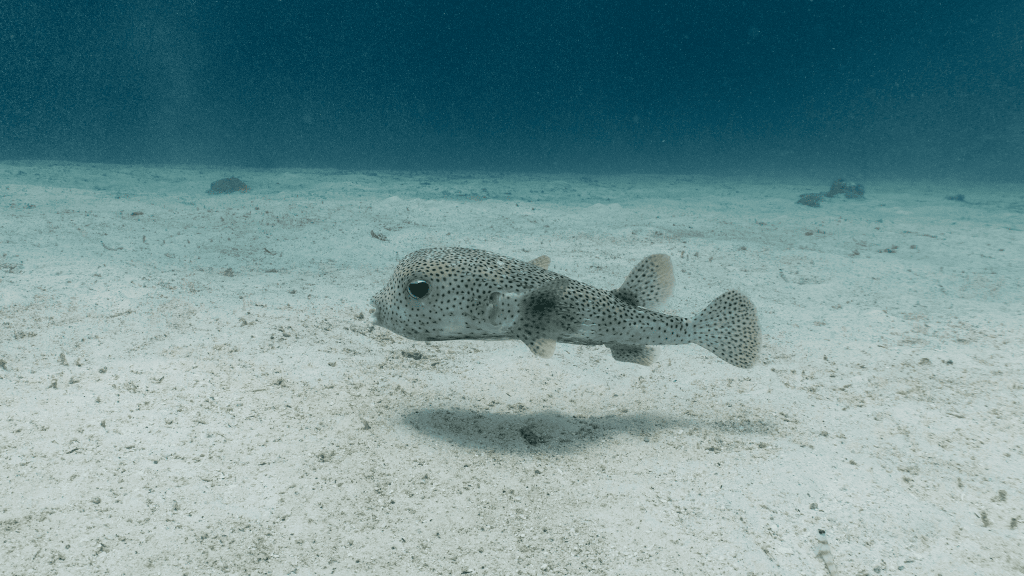Spot-fin porcupinefish
Spot-fin porcupinefish
The Spot-fin porcupinefish (Diodon hystrix) [Note: Also known as Giant Porcupinefish] belongs to the order Tetraodontiformes and the family Diodontidae. Adults can reach 91 cm in length and weigh up to 2.8 kg, but on average, they rarely exceed 40 cm.
A characteristic feature is that the dorsal and anal fins are set far back, approximately 3/4 of the body length. The dorsal fin contains no spines but has 14-17 soft rays. The anal fin, similarly, has 14-16 soft rays and lacks spines. The fish's body is robust, and the teeth in the upper and lower jaws are fused into a single unit (beak), which is characteristic of the Diodontidae family. The name Diodontidae comes from the Greek Diodon: di – two + odous – tooth.
The appearance of the Spot-fin porcupinefish is impressive due to its long, sharp spines, which are folded back against the body when at rest. If threatened, the fish inflates its body into a spherical shape, causing its spines to stand erect. There are 16 to 20 spines on the back, between the head and the dorsal fin. Body coloration varies from light brown to light violet, with numerous dark spots, and the belly is white.

This species inhabits tropical and subtropical zones of the Indo-Pacific region, preferring lagoons and outer slopes of coral reefs at depths ranging from 2 to 50 meters. It is often found in caves and crevices of shallow reefs. Juveniles, up to about 20 cm, prefer a pelagic lifestyle, swimming in open water.
These fish are usually solitary and actively hunt for invertebrates such as sea urchins, gastropods, and hermit crabs, especially at night.

